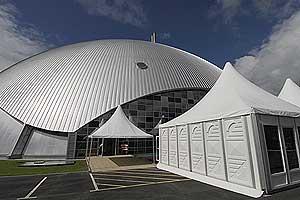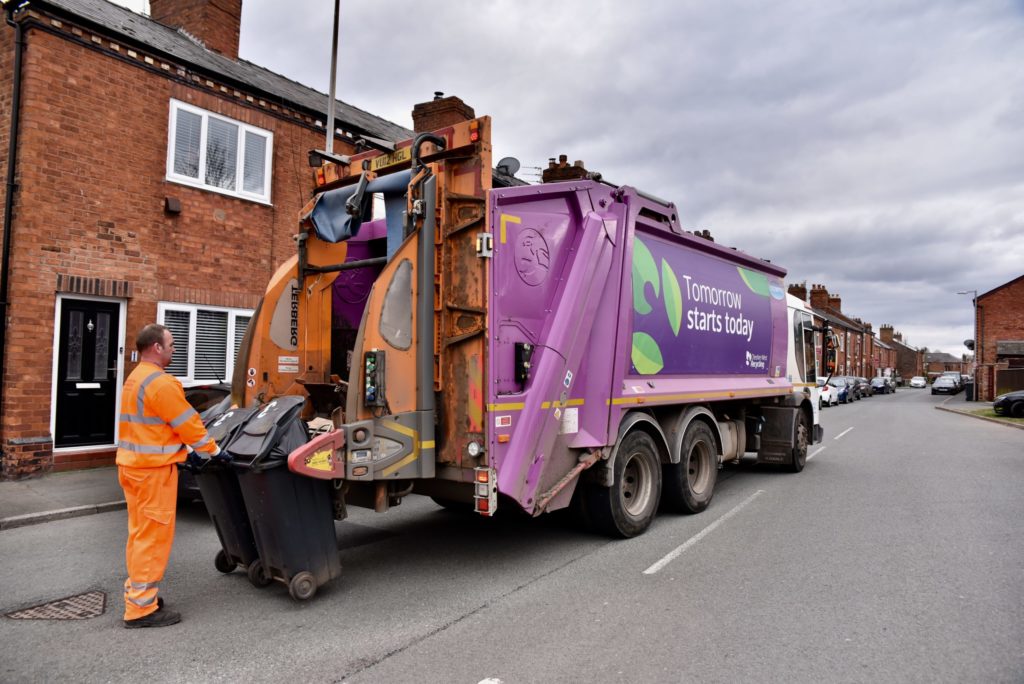Overall it appears that plans for the UK to avoid missing the Landfill Directive's targets are on track but that the credit crunch is slowing down the rate of progress in implementing new waste infrastructure to meet the targets. This is a much better position than for many renewable energy projects, especially wind farms, where projects have been abandoned and with no hope of resurrection, at least in the short to medium term.
Much of the new waste management infrastructure is predicated on the generation of energy, especially electrical power, which might suggest that the waste sector is likely also to be affected. However, since on average only 30% of waste revenues are from energy sales and 70% comes from gate fees for waste disposal this places waste management facilities in a better position.
Much of the new waste management infrastructure is predicated on the generation of energy
Jeff Cooper
Nevertheless, as was noted by John Kirkpatrick, Director of Studies of the Audit Commission, who was principal author of its report Well Disposed in September 2008 the UK's position is very precarious.
From the Audit Commission's analysis reinforced by several other reports that have followed “if local authority plans come to fruition then 2013 will be OK” but this relies on infrastructure to be built as planned and on time. However, “individual councils will fail and for all councils costs of waste treatment will increase by at least a third but for many will double over the next 5 years,” according to John Kirkpatrick.
The Policy Framework
The policy framework within which the future of waste planning and its finance will be developed was set out by Karolina Fras who dealt with the European aspects, Daniel Instone of Defra who reported on the implementation of the English waste strategy and Dr Andreas Jaron who reported on how the Germans had restructured their waste economy.
Ms Fras of the Sustainable Development and Integration section of DG Environment in her presentation on waste management policy drivers noted that for the requirement in the revised Waste Framework Directive the EU Commission for waste prevention targets to be established by EU member states the Commission will be generating indicators to enable the states to check their progress.
She also noted that there was a need for more robust global structures for waste to ensure that the EU also protected the environment beyond the EU's borders. Ms Fras announced that the EU Commission's green paper on options for the management of bio-waste had been issued and was out to consultation until the end of March.
There is a need for robust global structures for waste
Karolina Fras
Mr Instone acknowledged that there had been no local authorities prepared to volunteer to pilot pay as you throw schemes in England. In contrast Dr Jaron, Head of the Division of Waste Management at the Federal Ministry of the Environment of Germany noted that the whole of the German waste management system was based on two principles: adherence to legislative requirements and a fee structure which ensures that both industry and households pay for management of their waste.
In addition to achieving a 60% municipal solid waste (MSW) recycling rate since 2002 Germany was now generating less waste and in 2007 generated only 87.5% of the amounts produced in 2000-2002.
Dr Jaron also noted that the 2005 ban on biodegradable waste to landfill had caused problems in many parts of Germany with more than 3 million tonnes going to “interim storage”, temporary landfill. The cost of incineration had doubled from €100 per tonne at the end of 2005 but thanks to a rapid development of incineration capacity, which has equalled the UK's total MSW incineration capacity, the costs had now come down to €130 per tonne. Germany now has 72 MSW incineration plants, 60 BMT plants and 800 composting facilities. The 46m tpa CO2 savings attributable to the biodegradable waste ban were estimated to have produced a 20% contribution to Germany's Kyoto targets.
The Waste/Energy Interface
On the finance aspect while there is concern about funding the necessary waste facilities to 2020 at an estimated cost of £11-20bn for the UK, in the case of the electricity generation sector it is £300bn. Many of the conference contributions looked at the opportunities for synergies between the two sectors.
Inevitably the main subject of discussion was the decision by Government to exclude conventional
In addition, there were the frustrations expressed by Neil Grundon, managing director of Grundon Waste Management of the time and expense of connecting EfW facilities into the grid. Samantha Fuller suggested that the two sectors should work together to remove or adapt the current queuing system used by National Grid which was the cause of most of the difficulties.
New Projects
Duncan Grierson, chief executive of waste management and green energy firm, Sterecycle, provided an intriguing case study of the development of his project based in Rotherham. He came from an investment and venture capital background and in 2003 had the idea of adapting sterilisation, a system used extensively for medical waste treatment, for the treatment of MSW and selected C&I wastes.
Most of the funding necessary to take the concept through to the building of an operational plant came from selling equity stakes in the project, both to a key individual investor who had faith in the project. In 2006 Goldman Sachs provided £8.2m to establish the plant. In all £22m was secured from private equity sources.
The plant initially still needed to have a contract from a local authority in order to justify the
The plant is currently processing 1,100 tonnes of waste each week and the original 100,000 tpa plant has been given planning approval for doubling its capacity in order to fulfil its Rotherham, Barnsley and Doncaster waste contract awarded in August 2008.
The plant operates through processing the waste in 10m long stainless steel vessels where the waste is cooked for an hour. The resulting cleaned waste is then segregated into clean recyclable wastes for onward sale and “sterefibre”, mainly the cellulose components in the waste.
This might be usable as a pulp source but will probably be a source of renewable energy, most likely in a combined heat and power (CHP) facility at the end of the plant. In response to a question as to the energy efficiency of the process Duncan Grierson stated that “about 15% of the energy which could be generated through the processing of the combustible waste fraction would be sufficient to run the plant”.
A future suite of projects for England was announced by Ralf Trottnow, Director of Biossence, a subsidiary of a Swiss finance company. The company has ambitions to establish 1.5m tpa of waste treatment capacity in the UK in the next 5 years.
It is focusing on areas such as Merseyside and Greater London which have a low capacity for waste treatment and high waste concentrations. These would be merchant plants, reliant on the commercial and industrial (C & I) sectors but clearly the potential for taking in local authority waste would be great as these areas are in grave danger of not meeting their BMW diversion targets for 2013.
The initial project is a 600,000 tpa at Hooton Park, Merseyside with a pyrolyser/gasifier plant which because it is advanced thermal conversion qualifies for double ROCs. The plant in located close to several potential heat load customers within the immediate vicinity including a paper mill.
Finance
The consensus from speakers was that there was a huge international shortage of funds, which was affecting the UK but that for well founded waste projects there were still sources of project funding available. However, inevitably the potential sources of funding were much fewer and the amounts available from any one source were now more limited.
Philip Russell, head of wastes management for West Sussex County Council, showed how having secured PFI funding for its pioneering 2004 waste reclamation strategy, which included capital expenditure of £45m and total revenue of £500m over its 25 year life, it was rejected for a further PFI bid by Defra.
It is now undertaking its strategy for residual waste through a hybrid option, including prudential borrowing for the 60% of plant associated with plant with lower risk. The private sector will put in 40% with 34% senior debt and 6% equity contribution. However, even this project has been subject to delay so it will be at least the end of April 2009 until the contract can be signed with Biffa for a mechanical biological treatment (MBT) project. This will produce SRF, with the possibility that on the site where the solid recovered fuel (SRF) is produced a thermal treatment plant could be built should there be a lack of markets for the SRF.
A more positive perspective on financing was provided by Adrian Kamenitzer, the Head of Equity and Structured Finance/Risk Management of the Credit Risk Department of the European Investment
The EIB funds many large projects for waste management companies
Jeff Cooper
Bank (EIB). The EIB is the world's biggest bank and funds available for lending will be €75bn in 2009 compared to €55bn in 2008. Look down the list of funding organisations for all of the UK larger waste management projects and the EIB will be there.
It lends for finance mainly for infrastructure projects, including waste management projects, mainly through long term loans but also provides equity finance for infrastructure projects as well. It lends against good assets for which a long term repayment stream is assured and most waste facilities in the UK meet this criterion. The sting in tail is that the limit for the EIB's project funding is a maximum of 50% of the total capital requirement











Subscribe for free